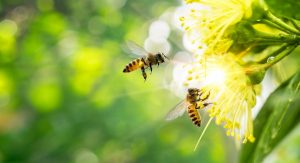
There has been a buzz lately about Artificial Intelligence (AI) machines such as Dall-E 2 or Google’s Imagen creating realistic looking images of completely unrealistic scenes by describing the desired image in words. For example, if you want a picture of a giant cobra made of corn slithering on Mars, or a human palm with leaves growing from its fingers, simply type the phrase into the machine and there you have it.
Following the accolades there come the questions. Will it threaten the livelihood of artists? Will it make photographers obsolete? Will graphic designers become a thing of the past? This is how we operate, judging everything in terms of what is good for me, as if we can stop the world’s progress if we disagree with it.
We have tried to stop many technologies that are far more ruinous than artificial artistic images. It has never worked. We could not stop the making of nuclear weapons or the production of killer drones, and we will not be able to stop the development of AI in general, and AI art in particular. Nor is there any need to stop it. Instead, we should try to see how innovations can fit into our lives and improve them.
Technology is advancing along with our aspirations for self-expression. In other words, it is not technology itself that is advancing, but humankind. Because of it, trying to hinder the advancement of technology means trying to impede the advancement of humanity. This goes against nature, and it will never lead to positive results.
Technology is a raw material. Just as a sculptor might use a rock to chisel out an image, or a musician would use a musical instrument to create music, AI is the instrument that creates the artist’s creation. The only question is what kind of art we want to create.
If I were to use this kind of art, I would try to create spiritual art, one that shows the hidden connections between different elements in nature. If we could show how everything is connected and dependent on the well-being of everything else, we would relate to the environment and to other people very differently from the way we do today.
For example, I would ask the machine to draw the love between a flower and a bee. Not a flower and a bee, but the love they feel for one another. Because they do, except we do not feel it (for the most part). The relationship between the bee, which needs the flower’s nectar to feed herself and her young, and the flower, which needs the bee to pollinate and reproduce, is a symbiotic relationship that involves two very different levels of nature—the animate and the vegetative. Because of it, the two are deeply connected and feel close to one another.
If we could show how everything is connected in this way, we would be able to sympathize with all of nature and with all the people, feel connected to them, and develop affection for all things and all people. If we could do that, we would not need to worry about limiting the development of potentially injurious innovations, since the affection between us would guarantee that we use everything only to benefit everyone, and never to harm them.